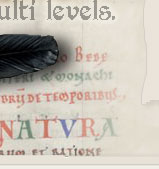Testing MOSFETs (From: Paul Mathews (
optoeng@whidbey.com).)
Verify gate has infinite resistance to both drain and source. Exception: FETs with protection circuitry may act like there is a zener shunting GS, i.e., diode drop for gate reverse bias, ~20V breakdown in fwd bias.
Connect gate to source. Drain to source should act like a diode.
Forward bias GS with ~5 V. DS in forward bias should measure very low ohms. In reverse bias, it will still act like a diode.
The usual failure mode: GS short AND DS short. In other words, everything connected together.
(From: Richard Torrens (
4qd@argonet.co.uk).)
A lot of common multimeters have a diode range: you can use this to measure a MOSFET out of circuit and get a good idea of whether it is OK. Meter negative on the source, you should get no reading (open circuit) on the drain. Not on the gate but if you measure the drain AFTER measuring the gate you will find it conducts. A finger between source and gate will bleed away the charge and the MOSFET stops conducting.
You really need a 'scope to check the drive circuit. What it does will depend on the circuit configuration, whether there is current limiting etc.
(From: E. Wolsner (
interser@algonet.se).)
My way of testing a power MOSFET is indeed simple and normally sufficient:
One ohmmeter is connected to the drain and the source, measuring the resistance between drain and source, which should be very high. Another ohmmeter is connected between gate and source. This ohm-meter should have a high resistance capability (maybe 20 M ohms) and thus have a relatively high test voltage (more than 5 volts). Now this voltage, when connected with the proper polarity, will turn the mosfet on, which will be indicated by the first ohm-meter. It will show zero resistance. To turn the transistor off, you reverse the gate-source voltage, and the drain-source ohm-meter will again indicate high resistance.
(Portions from: Egon Wolsner (
interser@algonet.se).)
The multimeter must be able to provide at least 5 volts output on the resistance measuring range (this usually means that a DMM will not work). If it does, here is the procedure:
First you measure the resistance between the drain and source terminals, it should be infinity. Then connect the plus to the gate and the minus to the source pin. That should turn the MOSFET on. Then you measure the resistance between the drain and source pins, which should verify that the resistance is indeed near zero. (The gate capacitance will hold the device in the on-state long enough for this test.) Turn the mosfet off by shorting the gate and source pins (for a n-channel MOSFET)
(From: Bruce (
reglarnavy@aol.com).)
You can get a pretty good idea about the condition of a MOSFET with some quick & simple bench tests. The first thing you can do with a meter is measure the parasitic substrate diode that connects the drain to the source. In an NMOS part, this diode's cathode will be at the drain, and the anode at the source. It will meter out similar to any conventional diode in both fwd / reverse directions. You can see this diode in the schematic representation of the FET in some databooks and a few schematics. The FET should show infinite resistance, gate - source and gate - drain. If it does not, then the gate oxide may be blown.
A second simple test can be done with a meter and a 9 V battery. First, short the gate to the source to discharge any stored charge there. Then put your meter on ohms and connect it across the drain - source. It should measure as an open. Briefly connect the 9 V across the gate (+) to source (-) , again, NMOS polarities, and the meter resistance should fall to a very low resistance, on the order of an ohm or less. Removing the battery will not change the reading, because in a good FET, Ciss will remain charged for a long time and keep the FET on. Most FETs come on at Vgs=2 volts or so.
If these two tests work, then the FET is off to a good start. Substituting a power supply and a proper load resistor for the meter, and a variable voltage (a pot across the 9v will work) for the Vgs supply, in the aforementioned test, will obviously be a more realistic test, and will also let you measure Vds, Id, etc.
BEWARE ESD WITH FETS! Wear a wrist strap, keep the parts away from insulators like plastics, and make sure your soldering iron tips are grounded. If you do not have any of the black ESD foam to keep your parts in, then look around for an anti-static bag that once may have contained a computer board, SIMMs, etc.




